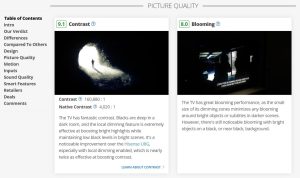By David Dodd, Published November 12, 2014
Today, there are two distinct, and seemingly contradictory, paradigms of B2B demand generation. Both paradigms are essentially responses to profound changes in the B2B marketing and sales environment, the most significant of which has been the emergence of empowered buyers. Business buyers now have easy access to a wealth of information, and they are using that information to perform research on their own. As a result, they are much less dependent on sellers than in the past.
One approach to dealing with empowered buyers is to expand the role of marketing in lead acquisition and lead nurturing. Proponents of this approach rely on research which indicates that today’s business buyers are educating themselves and delaying conversations with sales reps until later in the buying process. For example, SiriusDecisions says that business buyers are now performing 67% of their buying process online. CEB and Forrester Research go even further and say, respectively, that B2B buyers are 57% or 67% through the buying process before they engage salespeople.
The marketing-centric paradigm accepts that most potential buyers prefer to learn about business issues and possible solutions on their own, especially in the early stages of the buying process. Advocates of the marketing-centric paradigm say that instead of fighting this preference, companies should use content resources and marketing automation technologies to support the “self-directed buyer” as he or she goes through the learning process.
The second paradigm of B2B demand generation focuses on sales methodology and emphasizes the continued importance of sales reps in the demand generation process. CEB is a major advocate of this paradigm, and what CEB and others argue is that salespeople should engage early-stage buyers and use disruptive insights to change how they are thinking about business issues and challenges. These disruptive insights enable sales reps to shape demand rather than simply react to existing demand. More importantly, disruptive insights provide value that buyers can’t easily get anywhere else and thus make it worthwhile for them to interact with sales reps.
Advocates of the sales methodology paradigm argue that the statistics from SiriusDecisions, CEB, and Forrester are averages that mask a wide variation in actual buyer behavior. And there is research to support this argument. For example, in the 2012 How Buyers Consume Information Survey by ITSMA, over 70% of B2B technology buyers said that want to engage with sales reps before they finalize a short list of preferred vendors.
The reality is that B2B demand generation is more varied and complex than it is often portrayed. When you consider all of the available research, it’s clear that a large majority of business buyers (probably 80% or more) are performing independent research before they interact with a sales rep. It’s also clear, however, that a significant percentage of potential buyers will turn to sales reps early in the buying process. Therefore, the two paradigms of B2B demand generation are, in fact, complementary, not contradictory.
What is also undeniable is that early engagement is vital to demand generation success. Forrester says that solution providers who engage prospects early in the buying process win 74% of the deals, while the win rate for those who engage late in the process is only 26%.
The bottom line is, B2B companies must be ready, willing, and able to engage with prospects on their terms. This means that successful lead generation requires both marketing and sales.
Business Articles | Business 2 Community
(339)
Report Post





